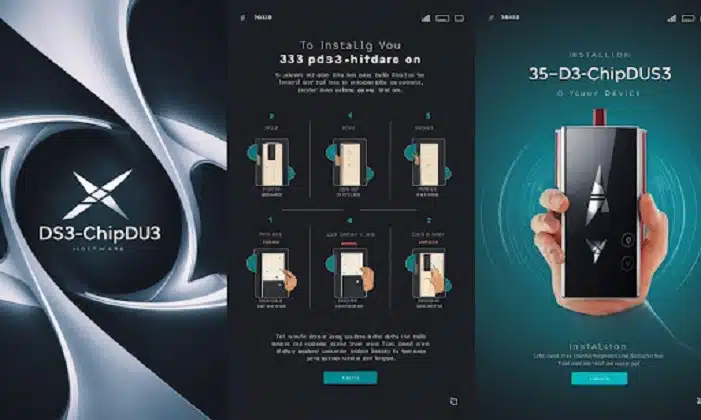The 35-ds3chipdus3 is an advanced performance enhancement chip designed to optimize electronic devices and improve overall system performance. This innovative technology focuses on enhancing device responsiveness, system stability, and data transfer rates while minimizing hardware conflicts. By installing the 35-ds3chipdus3, users can achieve significant improvements in device longevity and energy efficiency.
The chip’s cutting-edge architecture supports faster communication between hardware components, resulting in smoother operation and reduced system latency. Its compatibility with various operating systems and hardware configurations makes it a versatile solution for users seeking to upgrade their technology. The 35-ds3chipdus3 incorporates intelligent firmware technology that adapts to usage patterns, ensuring optimal device optimization over time.
Pre-Installation Requirements
Before beginning the 35-ds3chipdus3 installation, ensure your device meets essential hardware specifications. Your system requires a minimum processor speed of 2.0 GHz and at least 4 GB of RAM for proper functionality. These specifications ensure smooth installation and optimal system performance post-installation.
Operating system compatibility is crucial for successful implementation. The 35-ds3chipdus3 supports Windows and various Linux distributions. Update your operating system to the latest version to prevent installation errors and compatibility issues. Some systems may require specific patches or updates before proceeding with installation.
Essential prerequisite software includes updated device drivers and relevant installation tools. Download necessary firmware updates and ensure your antivirus software is temporarily disabled during installation. Verify internet connectivity for downloading additional components during the installation process.
Downloading the 35-ds3chipdus3 Software
Source the 35-ds3chipdus3 software exclusively from official manufacturer websites or authorized distributors. These legitimate sources provide the most current version with important security patches and performance enhancements. Official download portals offer software packages tailored for specific device models and operating system configurations.
Avoid downloading from unknown third-party websites that may contain malware threats or corrupted files. Verify website authenticity by checking for HTTPS encryption and official branding. Always scan downloaded files with updated antivirus software before proceeding with installation.
The download package typically includes the main installer, device drivers, configuration utilities, and comprehensive documentation. Choose the appropriate version based on your system specifications and hardware compatibility requirements.
Step-by-Step Installation Instructions
Begin the 35-ds3chipdus3 installation by verifying system requirements and ensuring hardware compatibility. Close unnecessary applications and connect to a stable power source. Locate the downloaded installation file and run it with administrative privileges to allow necessary system modifications.
Follow on-screen instructions carefully, accepting default settings unless specific customization is required. The installer automatically detects hardware specifications and adjusts configuration parameters accordingly. During installation, select the appropriate installation directory or use the recommended default location.
The installation process transfers necessary files and configures system settings for optimal performance. This typically takes 10-15 minutes depending on system specifications. Avoid interrupting the process or running intensive applications during installation to prevent system instability.
Upon completion, restart your computer to activate all changes and ensure proper system integration. The restart allows the 35-ds3chipdus3 to initialize correctly and begin optimizing device performance.
Common Installation Issues and Troubleshooting
Installation errors often result from hardware incompatibility or outdated system configurations. Verify that your device meets minimum requirements and update device drivers before attempting installation. Compatibility issues frequently arise from outdated operating systems or missing system patches.
Permission-related problems occur when the installer lacks administrative rights. Ensure you’re logged in with administrator privileges and temporarily disable security software that might interfere with the installation. Network connectivity issues can interrupt installation if additional files need downloading.
If installation fails, restart your system and attempt the process again with all non-essential applications closed. Check for system conflicts with existing software and temporarily disable unnecessary background processes. Contact technical support if persistent issues occur despite following troubleshooting steps.
Post-Installation Configuration
After successful installation, access the 35-ds3chipdus3 control panel to configure performance settings. The interface provides comprehensive options for adjusting system parameters, power management, and monitoring tools. Run the automatic system optimization wizard to analyze your hardware configuration and apply optimal settings.
Create custom performance profiles for different usage scenarios such as gaming, productivity, or media consumption. Each profile can be optimized with specific CPU frequencies, memory allocation, and power consumption settings. Enable real-time monitoring to track system performance metrics and identify potential issues.
Fine-tune settings based on your typical usage patterns and performance objectives. The 35-ds3chipdus3 offers advanced configuration options for power users who want maximum control over their system optimization.
Verifying Successful Installation
Confirm successful 35-ds3chipdus3 installation by checking Device Manager for proper hardware recognition. The chip should appear without warning indicators or error messages. All associated devices should display “working properly” status, indicating correct driver installation and system integration.
Run system benchmarks to measure performance improvements compared to pre-installation baselines. Test various applications and use cases to ensure system stability and consistent performance enhancements. Monitor system temperatures and power consumption during testing to verify optimal operation.
Document benchmark results for future reference and to track performance trends over time. Pay attention to resource-intensive tasks that best demonstrate the 35-ds3chipdus3’s capabilities and improvements in device responsiveness.
Maintaining 35-ds3chipdus3
Regular maintenance ensures continued optimal 35-ds3chipdus3 performance and system reliability. Schedule automatic firmware updates to benefit from the latest performance enhancements and security patches. Manufacturer updates often include optimizations for new operating system versions and software compatibility improvements.
Perform regular system cleaning to remove unnecessary files and temporary data that can impact performance. Use reputable cleaning tools to eliminate accumulated digital clutter while preserving important system configurations. Schedule maintenance tasks during off-peak hours to minimize workflow disruption.
Monitor system performance metrics regularly to identify potential issues before they become serious problems. Create baseline measurements after installation and track changes over time. Significant deviations may indicate need for driver updates or system optimization.
Conclusion and Recap
The 35-ds3chipdus3 represents a significant advancement in device optimization technology, offering users unprecedented opportunities to enhance system performance and computing experience. Through proper installation, configuration, and maintenance, this innovative solution transforms device capabilities and extends useful lifespan significantly.
Success with 35-ds3chipdus3 depends on following proper installation procedures, maintaining realistic expectations, and committing to regular system maintenance. By understanding the technology and following best practices, users achieve remarkable improvements in device responsiveness, energy efficiency, and system stability that justify the implementation investment.



